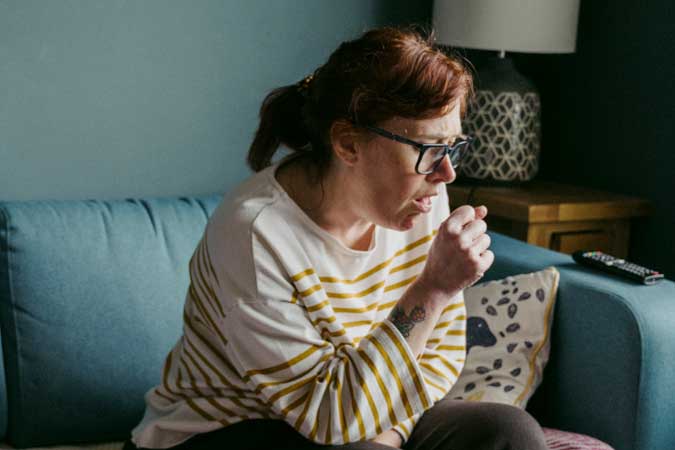For mild cases of COVID-19, home care is an option

BECAUSE the majority of coronavirus disease 2019 (COVID-19) cases are expected to be mild, and because the occupancy rate in many healthcare facilities is high, home care may be considered for an adult or a child with confirmed or suspected COVID-19 when inpatient care is unavailable or safe. Such patients who have been discharged from a hospital may also be cared for at home, if necessary.
Dr. Anna Lisa T. Ong-Lim, a professor of the University of the Philippines and the division chief of the Philippine General Hospital’s infectious and tropical disease in pediatrics, said in an April 10 webinar there are three key questions to consider for home care:
DOES THE PATIENT QUALIFY FOR HOME CARE?
People who are asymptomatic or those with mild or moderate disease without risk factors for poor outcome — that is, more severe complications or death — may not require emergency intervention or hospitalization, according to the World Health Organization’s guidelines for COVID-19 patient home care. These individuals could be suitable for home isolation and care.
(Common symptoms of mild cases of COVID-19 are fever, dry cough, and tiredness. Staying at home is an option if the patient can breathe normally. Having a pulse oximeter is handy: a normal level of oxygen is 95% or higher. If the reading dips below 95% and if the patient experiences shortness of breath, it’s time to seek medical attention.)
Aforementioned risk factors for poor outcome include those who are above 60 years of age, said Dr. Ong-Lim, as well as those with non-communicable diseases such as cardiovascular diseases, chronic lung diseases, diabetes, chronic kidney disease, immunosuppression, and cancer.
IS THE HOME SETUP APPROPRIATE?
A 14-day quarantine is intended to observe people who have been in close contact with people who have tested positive for COVID-19, because people can be contagious even before they start showing symptoms. Meanwhile, a 14-day isolation is implemented for people who have tested positive with COVID-19. The intention for the latter is to prevent the disease from spreading to others.
“If a person is coming back to a household from a holiday or elsewhere, then the safest thing to do is to have that person quarantine for 14 days,” Dr. Ong-Lim said. “With the number of cases now, it’s very likely you’ll meet people who are infected without you knowing it.”
The requirements of home care in terms of physical setup are as follows: a separate room (and bathroom, if possible), so isolation can be implemented properly; good airflow; a door that can be closed; and a delivery system for an infected person’s daily needs, without having a lot of contact with the rest of the household.
Isolated individuals are ideally people who can take care of themselves, so they can just pick up the food and supplies left at their doors. Carers who need to enter an isolated individual’s room should maintain a distance of at least one meter from the patient.
“In most cases, we only recommend carers to wear a mask and a shield,” said Dr. Ong-Lim. “If personal protective equipment (PPE) is available, however, then it can be worn as well.”
Proper disinfection has to be observed for reusable equipment, and dedicated linen and eating utensils have to be provided for the patient. Moreover, laundry and waste need to be handled safely, and should not be shaken so as to not aerosolize the virus on the materials’ surfaces.
Each household can prepare a home care kit, which can include the following essentials: PPEs or personal protective equipment (with masks, face shields, and gloves), cleaning and disinfection supplies (such as do-it-yourself bleach solutions), monitoring equipment (like a vital signs record, thermometer, blood pressure cuff, and pulse oximeter), and medication (for fever, cough, and colds, as well as any maintenance drugs).
CAN THE CAREGIVERS ASSESS THE PATIENT ADEQUATELY?
Caregivers cannot be persons with risk factors, this means they cannot be elderly, nor can they be sick. It helps for caregivers to also be reliable so the validity of the information shared with a doctor can be ensured.
“You don’t want someone who is vulnerable, because if the carer gets sick too, then that compounds the problem,” said Dr. Ong-Lim.
If it is a layperson providing care, it’s best to establish lines of communication with a trained healthcare worker immediately. Should an emergency arise, the caregiver will have someone to contact.
Emergency medical attention should be sought if an individual is disoriented; is unable to wake or stay awake; has trouble breathing or persistent chest pain; or has pale, gray, or blue-colored skin, lips, or nail beds.
“Kahit nasa corridor lang ng hospital [Even if it’s just in the hospital corridor],” said Dr. Ong-Lim, “because at least you are within access to healthcare workers and medical interventions.” — Patricia B. Mirasol



